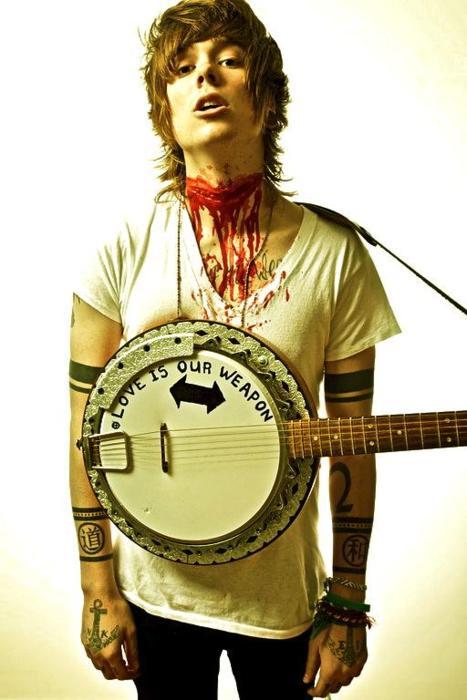
A doc that nails it. 'The Cruise' (1998) Bennett Miller
Documentary film has the ability to nail me square in the skull like few other cinematic creations can. When I contemplate the movies that have infected me most, many docs make my personal reverberation list. It is by no means an easy task to craft a doc that summons all the elements required to make one great. As with comedy and horror, many try and most will ultimately fail at assembling something that not only makes an impact, but rises above the glut. Having been fortunate enough to have owned a video store for 10-years (recently closed-WHOLE other article!) I’ve had the opportunity to see an assload of films, including many, many docs.
One of the things that drives me batshit insane is the number of wholly unqualified people who believe they are fully capable of making a documentary. Many realize they don’t have the skills to make a dramatic movie with all that it entails. Unfortunately, they instead decide to make a doc because it’s supposedly “easier.” Guess what? It goddamn well isn’t. Not if you plan on making a good one, anyway.

"My Auntie Carol weaves baskets. I made a doc about her!"
Then there are the subjects people feel are so enthralling, we’re all going to be so super excited by the opportunity to learn about them. If you believe your brother-in-law is an inspiration because he struggles with chronic hemorrhoids yet still manages to volunteer at the animal shelter, or you think your uncle is really neat because he builds model trains out of popcorn in the basement, wonderful. Good for you and good for them. But, you don’t need to get a video camera, editing software and make a fucking movie about them! (OK, I’d totally watch the hemorrhoid guy at the animal shelter one.) And what’s more, you don’t need to then take your “important work” and bore the shit out of everyone by forcing it on every single local film fest for the next 5-years!
Sadly, it isn’t just amateur filmmakers who make lame documentaries. Some of the most buzzed about docs I’ve seen have been either partially or fully derivative. Everyone is cannibalizing each other to the point that creatively made docs are becoming difficult to find. It’s like how every zombie movie HAS to make certain they have a character ask “Why is this happening?!” and another inform everyone “They’re not dead, they’re UNdead. The only way to kill them is to shoot them in the head!”

If I see another documentary about the oil crisis, I'm gonna shoot myself in the head!

Irk One of the modern documentary is the insertion of old timey educational footage or classic training films. This is usually done to put things into historical context and to show us just how wacky things were in the 50’s. Since there is a vast archive available on virtually every subject, chances are pretty high you’re going to see this used over and over again. Michael Moore definitely became known for doing this, and while I can’t hold it against him since he was an early adopter, I can and will hold it against every other motherfucker out there who (still) uses it.
Irk Two of the modern documentary is the mega-pause narration, presumably used to underscore the importance of what is being said. “and so…Tabitha walks…to school…2 hours…each way…because…her mother…spends all their money….on mothballs.” Two recent examples of this beyond irritating stop-start speak are Waiting for Superman and Gasland. In fact, I couldn’t even finish the latter because it annoyed me so goddamn much. Waiting for Superman was interesting enough that I endured.

Irk Three of the modern documentary (and non-docs for that matter) is banjo soundtracks performed by someone who can barely play the fucking banjo. This instrument, when expertly picked, can blow the mind and strum the soul (haha!). But in the hands of that hipster artist who “will totally do the music for your movie,” it becomes a device of torture. Ba-dunk-a-dung…a-dunk-a-dung. Are you an interrogator who needs to get an enemy combatant to talk? Skip the waterboarding and just put one of these banjo hipsters with them in the prisoner cell. Mission accomplished!
Irk Four of the modern documentary is the overuse of the parallax effect in photographs. Virtually every doc that has been produced in the past couple of years has used this. It was cool as ice the first few dozen times, but now that it has become the rule rather than the exception, its use reeks of unoriginality. Yeah, I know that if all you have to work with is a few photographs of a subject it makes it a bit more dynamic. But honestly, if your source materials are that scarce, maybe we don’t need to see a documentary about it to begin with. Write us a nice short story instead.

Marwencol. You betcha!
Marwencol is such a good example of a recently made doc that provides the viewer with all of the things that can make this type of film so incredible, without propping itself up with a pair of predictable crutches. Sadly, for every Marwencol, we get swamped by thousands of annoying docs made by people who really should just stick with something else. Whenever I meet a person and they tell me they’re a “documentary filmmaker” I get the same feeling I do when someone refers to themselves as a “singer-songwriter.” Nauseous at worst, dubious at best.


















